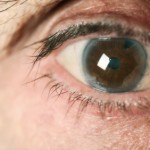Having had two of the infectious causes of a cough, bronchitis and a viral upper respiratory infection (URI), I was intrigued to hear that friends suffered the same sort of episodes I had gone through. Having written about whooping cough and its resurgence and then about influenza, another potential cause, I decided to explore both chronic coughing and the common cold.
Medicine net.com's home page on URIs has lots of links to supplementary information. The average adult has two or three colds a year and kids have more than that, so we all need to be prepared for upper respiratory infections, while deciding which illnesses require a visit to our doctor.
The CDC has a page on treating the symptoms of a viral URI. The first thing to notice is you're told that viral infections cannot be treated with antibiotics. When I was seen ten days ago for a cough much like the one I had with my October illness I had no fever, no symptoms suggesting a sinus infection, was coughing up clear fluid (not thick green stuff), wasn't wheezing and was told I had no signs of a bacterial throat infection requiring a throat culture.
What I did have was a severely sore throat and an incredible cough in double paroxysms that worsened when I tried to lie down. I had spent the preceding night sitting up on our couch which has foot rests at both ends. So I got three medications: a prescription cough suppressant that I took in half-dose at bedtime (HS) only, and two over-the-counter meds, one for the sore throat (ibuprofen) and one to loosen secretions (guaifenesin with Mucinex being the brand name). I was also advised to hydrate orally and via breathing, drinking three quarts of water a day and using a humidifier.
I slept well after that, but used two pillows instead of one. Yesterday I didn't take the HS med and today I quit the Mucinex; the sore throat had only lasted three days, so I've been off ibuprofen for a week.
The Mayo Clinic website says over 100 different viruses can cause the common cold with rhinovirus being the most frequent culprit. Other sites say 200 viruses can cause similar symptoms. But I keep hearing about people having prolonged coughs this year. Is something unusual going on?
WebMD defines an acute cough as one that lasts less than three weeks and a chronic cough as one that extends for more than eight weeks. Well...our West Coast friend we visited in October had a cold with a subsequent six-week of hawking and I had bronchitis with nearly four weeks worth of barking as a result. So both episodes fell in the middle of that range; why did our coughing episodes last so long?
I found a 2009 CNN webpage on chronic coughs and their causes. Again they use the eight-week definition for chronic and neither my friend in Washington state nor I have met that cutoff. I'm aware that whooping cough and influenza are certainly contributing to the upswing in the tales I've heard of those who whoop, hawk, rasp and cough for longer than usual. But I didn't write about asthma/allergies, chronic obstructive pulmonary disease (COPD includes emphysema and chronic bronchitis), gastroesophageal reflux disease (AKA GERD), air pollution. or the class of medications called ACE inhibitors (used for high blood pressure and other illnesses).
The CNN article said up to 40% of nonsmokers in the US and Europe have noted a chronic cough at one time or another in their life; it's among the most frequent reasons for a seeing your doctor.
Have you been one of my cohorts with an unusual cough this year? If so, is it acute or chronic? Have you seen your physician or do you need to do so?





















